【愚公系列】2023年02月 WMS智能仓储系统-001.NLog日志的使用
【摘要】 前言系统日志是记录系统中硬件、软件和系统问题的信息,同时还可以监视系统中发生的事件。用户可以通过它来检查错误发生的原因,或者寻找受到攻击时攻击者留下的痕迹。系统日志包括系统日志、应用程序日志和安全日志。服务器日志的典型例子是网页服务器的日志,其中包含页面请求的历史记录。W3C维护有一个网页服务器日志文件的标准格式——通用日志格式,但亦有其他专有格式存在。近年来的日志文件通常将内容附加到文件...
前言
系统日志是记录系统中硬件、软件和系统问题的信息,同时还可以监视系统中发生的事件。用户可以通过它来检查错误发生的原因,或者寻找受到攻击时攻击者留下的痕迹。系统日志包括系统日志、应用程序日志和安全日志。
服务器日志的典型例子是网页服务器的日志,其中包含页面请求的历史记录。W3C维护有一个网页服务器日志文件的标准格式——通用日志格式,但亦有其他专有格式存在。近年来的日志文件通常将内容附加到文件的结尾。添加的信息有关请求,包括客户端IP地址、请求日期/时间、请求的网页、HTTP代码、提供的字节数、用户代理、引用地址等。这些数据可能写入在一个文件中,也可能分隔成不同的日志,如访问日志、错误日志、引荐者日志等。但是,服务器日志通常不会收集特定用户的信息。
NLog是一个基于.NET平台编写的日志记录类库,我们可以使用NLog在应用程序中添加极为完善的跟踪调试代码。可以在任何一种.NET语言中输出带有上下文的(contextual information)调试诊断信息,根据喜好配置其表现样式之后发送到一个或多个输出目标(target)中。
官网地址:https://nlog-project.org/
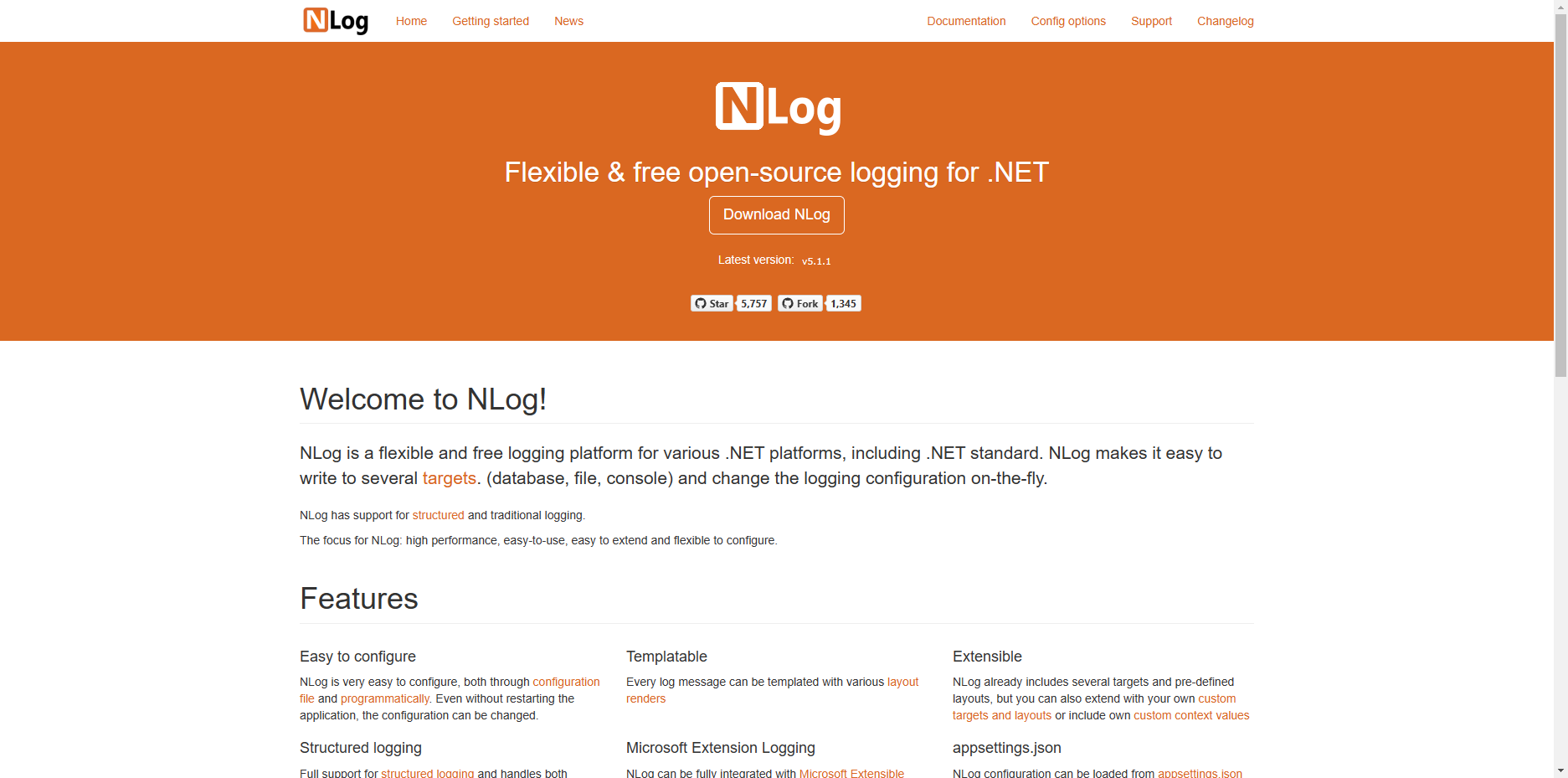
文档地址:https://github.com/NLog/NLog/wiki
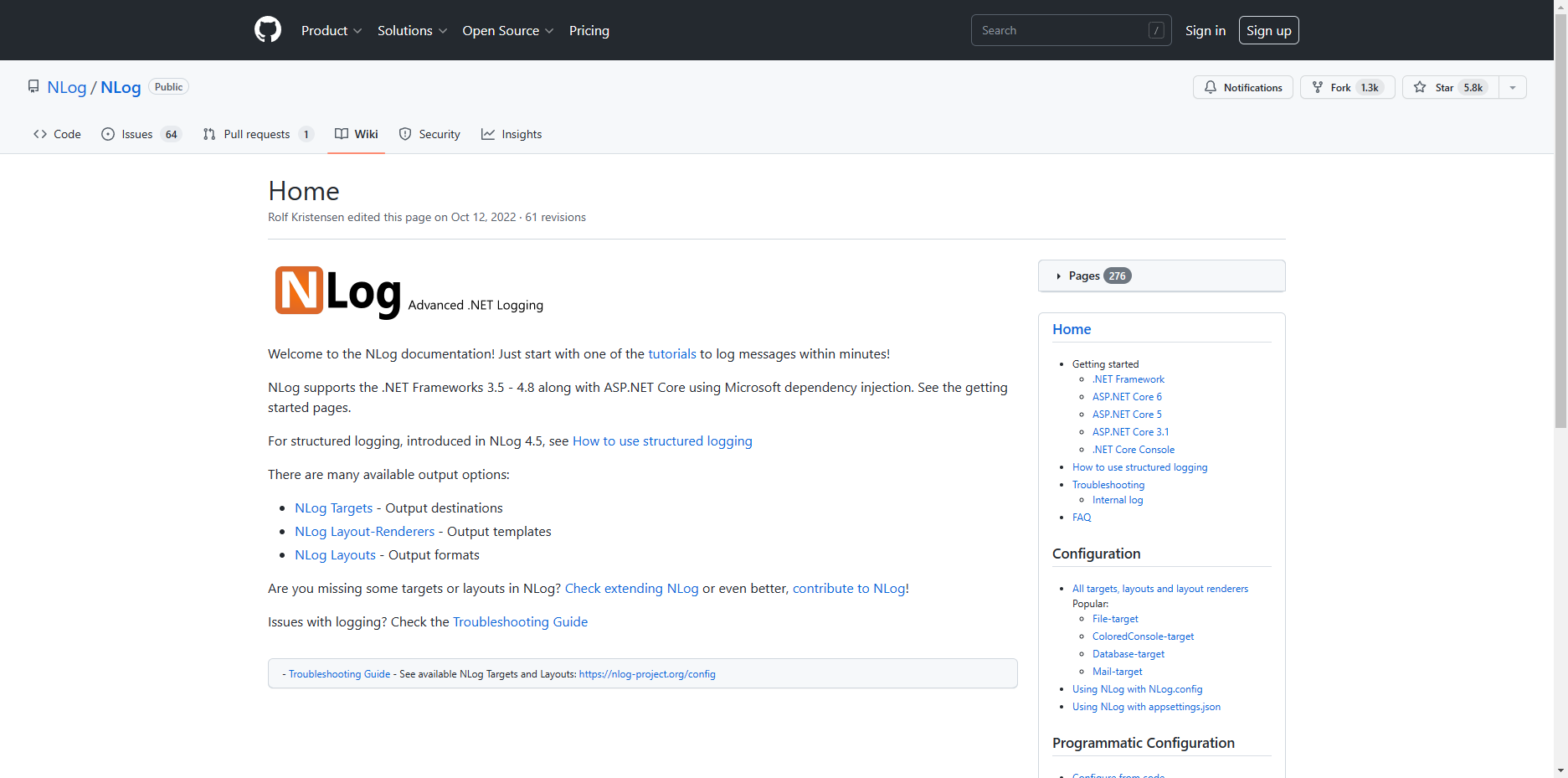
GITHUB官网:https://github.com/NLog/NLog.Web
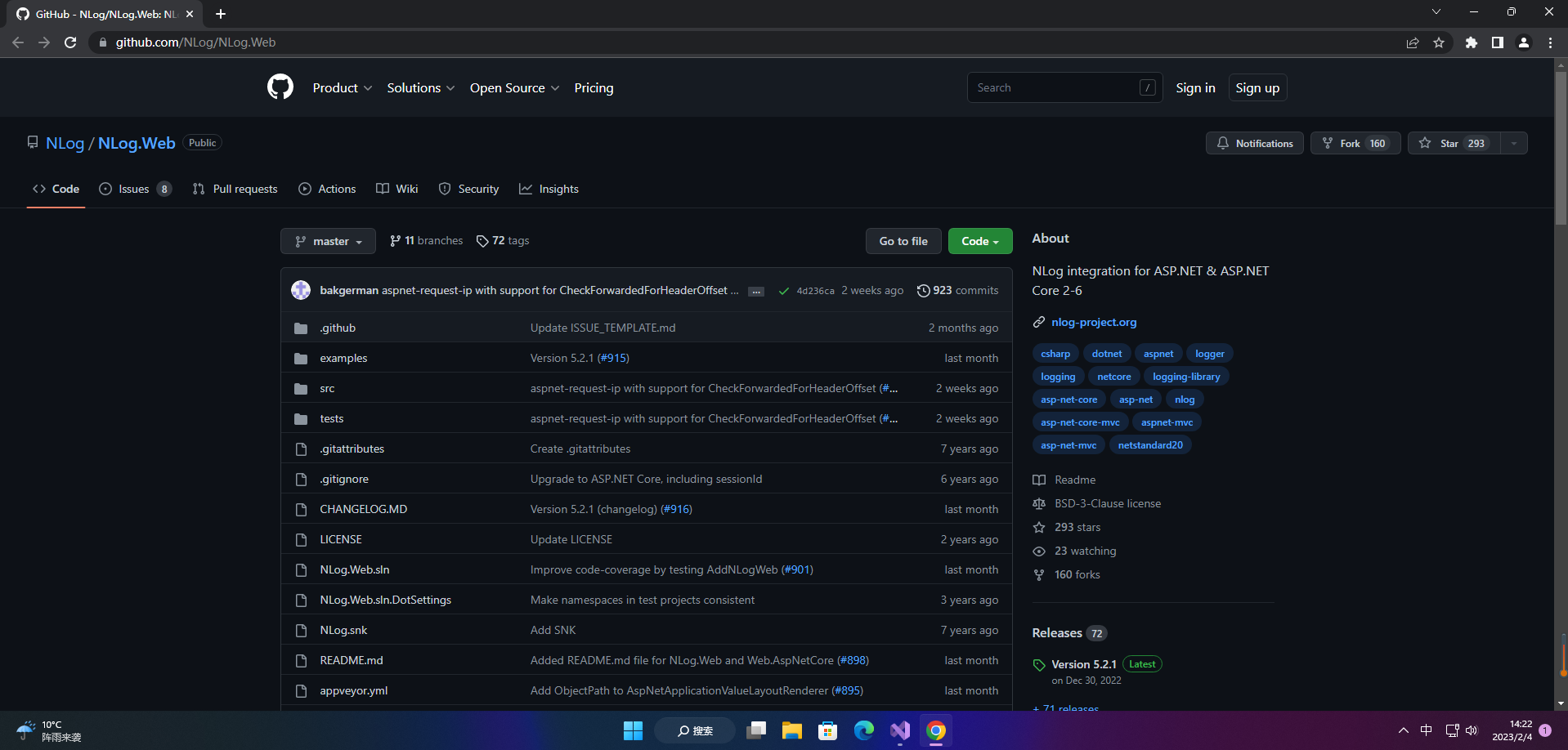
一、NLog日志的使用
1.安装包
NLog.Web.AspNetCore
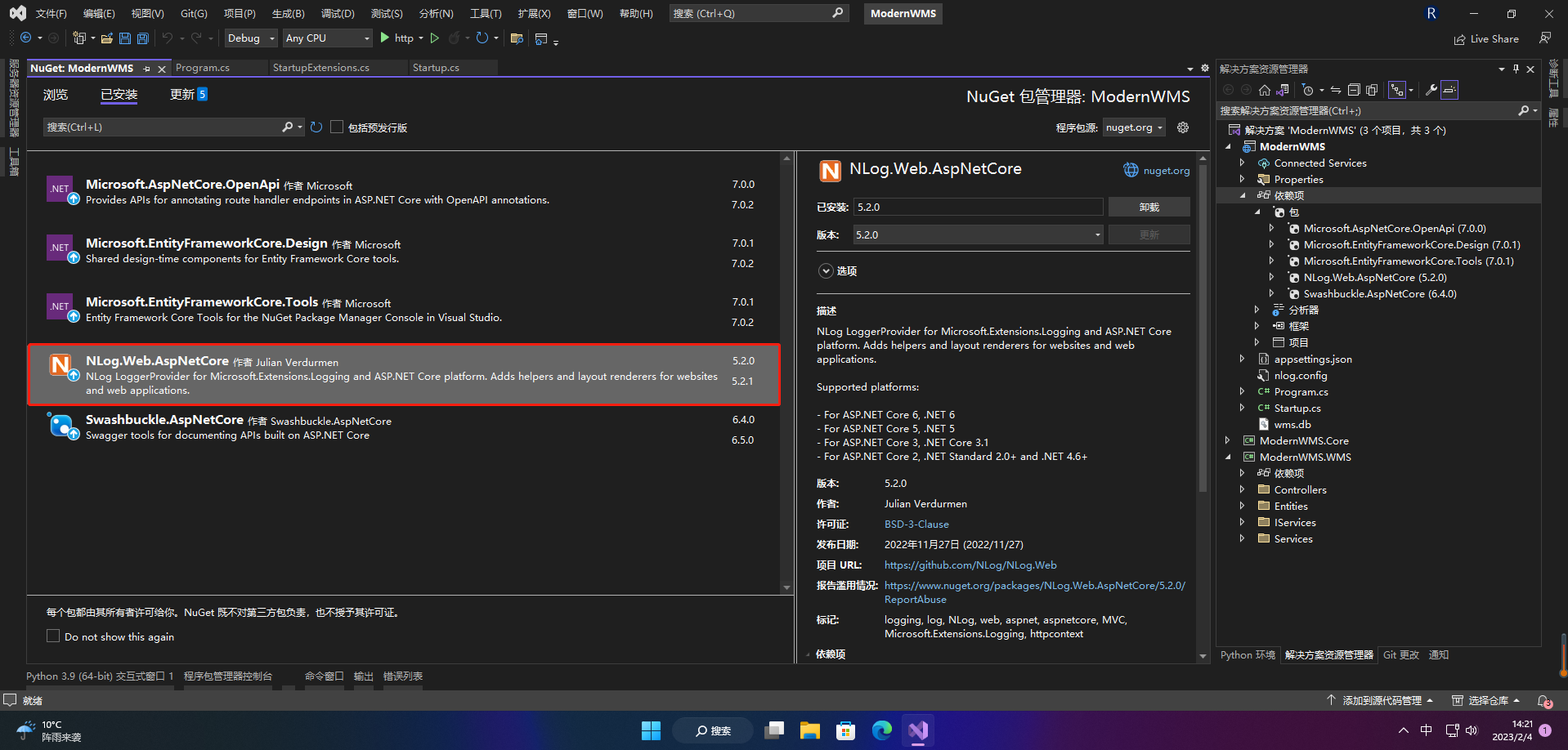
2.配置文件nlog.config
<?xml version="1.0" encoding="utf-8" ?>
<nlog xmlns="http://www.nlog-project.org/schemas/NLog.xsd"
xmlns:xsi="http://www.w3.org/2001/XMLSchema-instance"
autoReload="true"
internalLogLevel="Info"
internalLogFile="${basedir}/Log/internal-nlog.txt">
<!-- enable asp.net core layout renderers -->
<extensions>
<add assembly="NLog.Web.AspNetCore"/>
</extensions>
<!-- the targets to write to -->
<targets>
<!-- write logs to file -->
<target xsi:type="File" name="allfile" fileName="${basedir}\Log\nlog-all-${shortdate}.log"
layout="${longdate}|${event-properties:item=EventId_Id}|${uppercase:${level}}|${logger}|${message} ${exception:format=tostring}" />
<!-- another file log, only own logs. Uses some ASP.NET core renderers -->
<target xsi:type="File" name="ownFile-web" fileName="${basedir}\Log\nlog-own-${shortdate}.log"
layout="${longdate}|${event-properties:item=EventId_Id}|${uppercase:${level}}|${logger}|${message} ${exception:format=tostring}|url: ${aspnet-request-url}|action: ${aspnet-mvc-action}" />
</targets>
<!-- rules to map from logger name to target -->
<rules>
<!--All logs, including from Microsoft-->
<logger name="*" minlevel="Trace" writeTo="allfile" />
<!--Skip non-critical Microsoft logs and so log only own logs-->
<logger name="Microsoft.*" maxlevel="Info" final="true" />
<!-- BlackHole without writeTo -->
<logger name="*" minlevel="Trace" writeTo="ownFile-web" />
</rules>
</nlog>
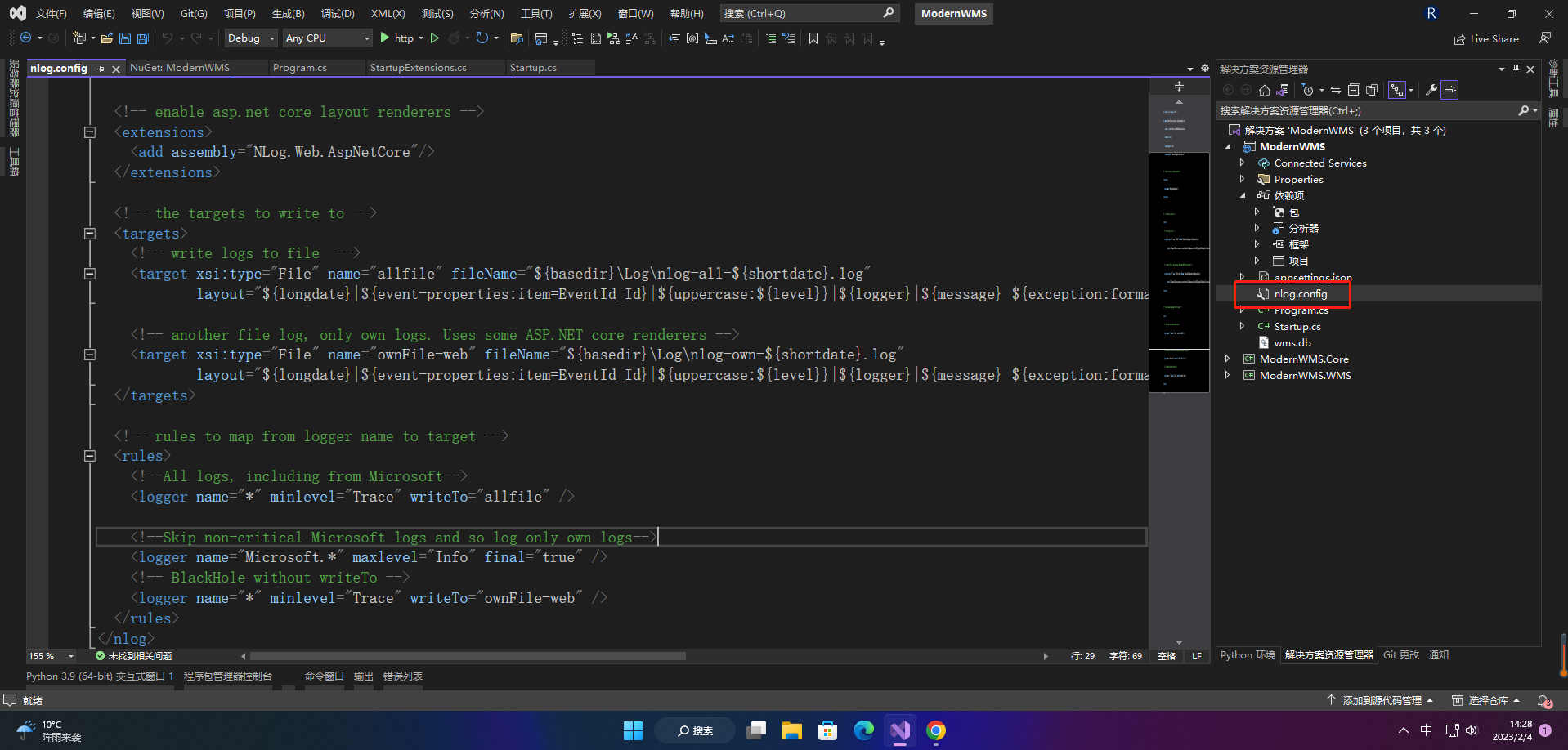
3.使用
public class Program
{
public static void Main(string[] args)
{
var logger = NLog.Web.NLogBuilder.ConfigureNLog("nlog.config").GetCurrentClassLogger();
try
{
logger.Debug("--- run");
CreateHostBuilder(args).Build().Run();
}
catch (Exception exception)
{
logger.Error(exception, "---- exception");
throw;
}
finally
{
NLog.LogManager.Shutdown();
}
}
public static IHostBuilder CreateHostBuilder(string[] args) =>
Host.CreateDefaultBuilder(args)
.ConfigureWebHostDefaults(webBuilder =>
{
webBuilder.UseUrls("http://*:5555")
.UseStartup<Startup>()
.UseKestrel(opt => opt.Limits.MaxRequestBodySize = null);
}).ConfigureLogging(logging =>
{
logging.ClearProviders();
logging.SetMinimumLevel(LogLevel.Trace);
}).UseNLog()
.UseDefaultServiceProvider(options =>
{
options.ValidateScopes = false;
});
}
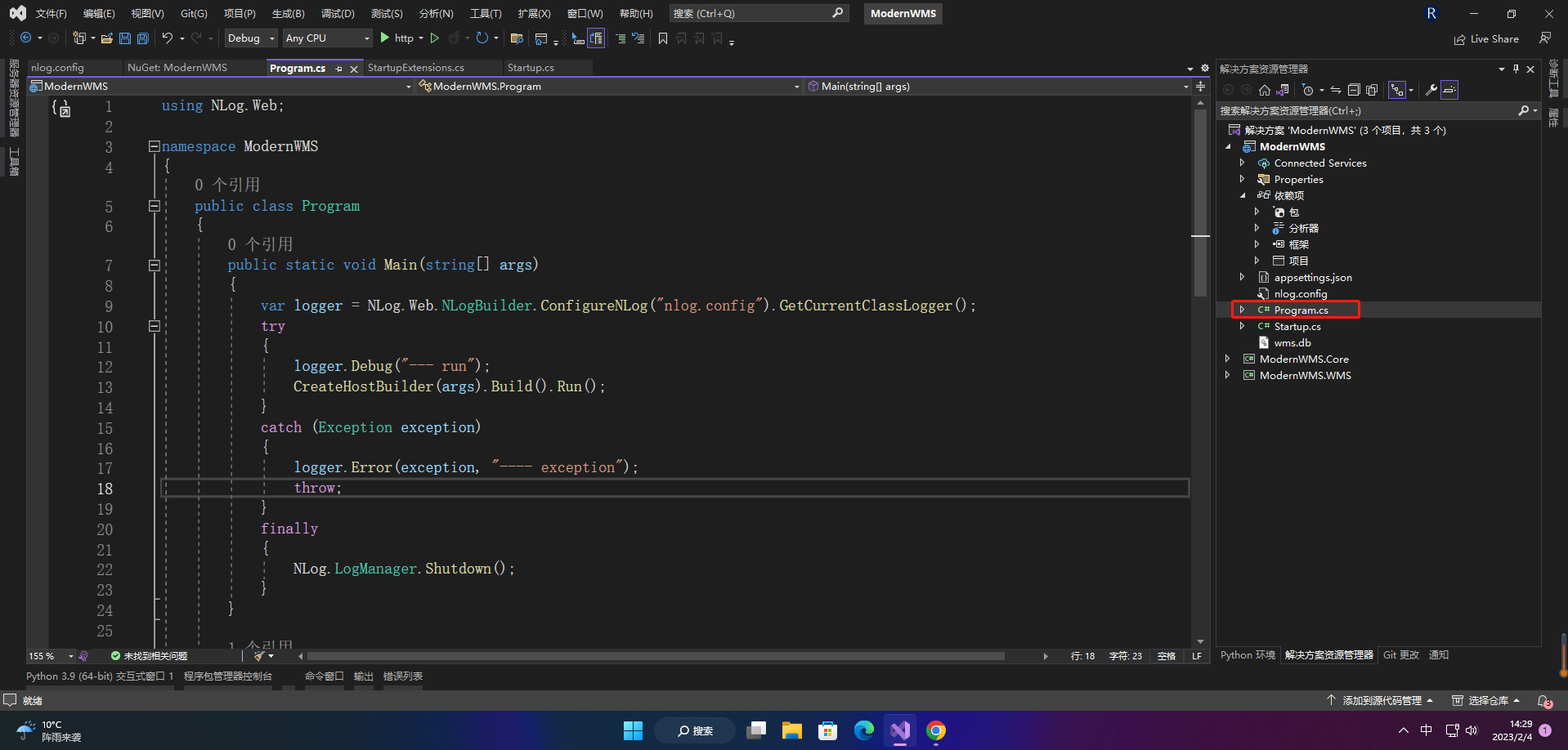
生成的日志文件
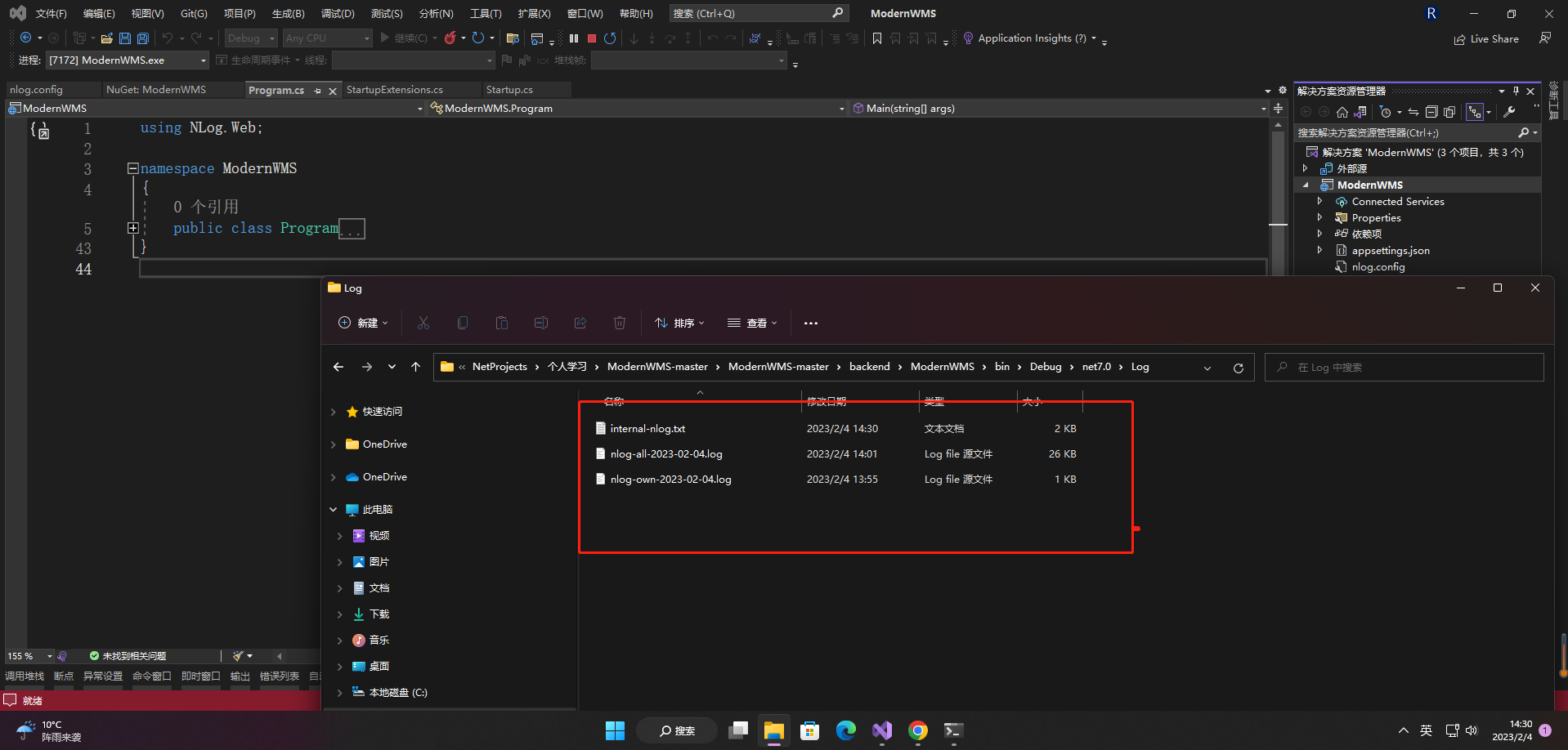
【声明】本内容来自华为云开发者社区博主,不代表华为云及华为云开发者社区的观点和立场。转载时必须标注文章的来源(华为云社区)、文章链接、文章作者等基本信息,否则作者和本社区有权追究责任。如果您发现本社区中有涉嫌抄袭的内容,欢迎发送邮件进行举报,并提供相关证据,一经查实,本社区将立刻删除涉嫌侵权内容,举报邮箱:
cloudbbs@huaweicloud.com
- 点赞
- 收藏
- 关注作者


评论(0)